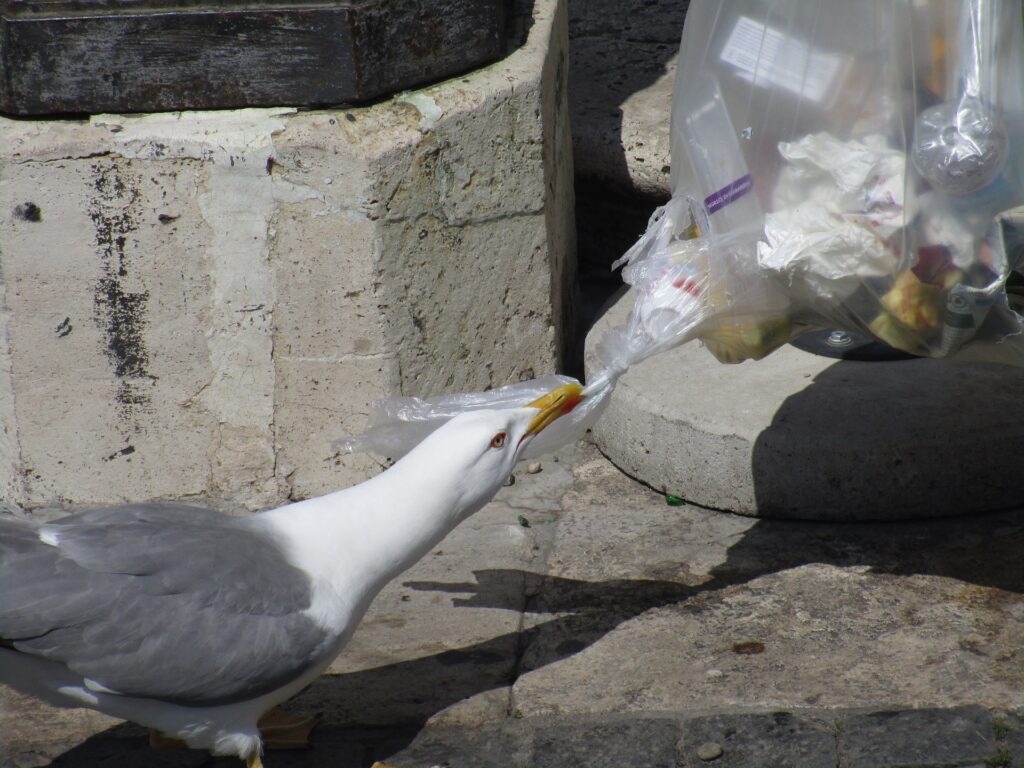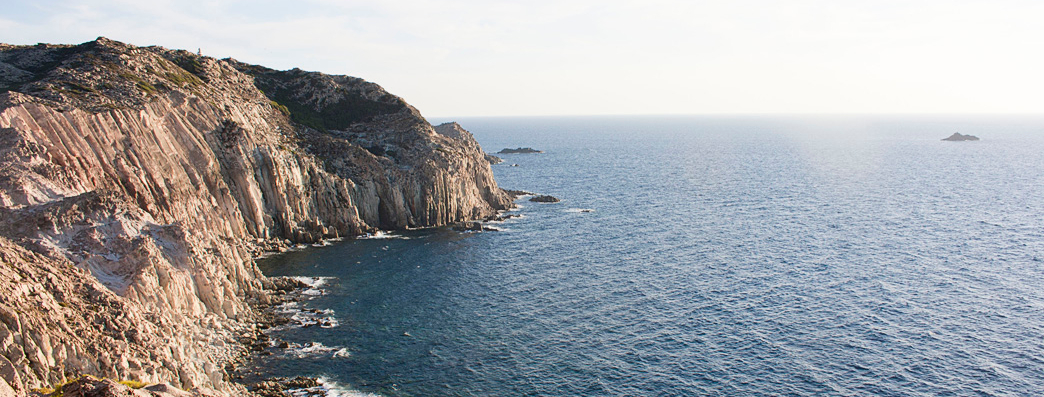
It was October 31, 1963 when Alfred Hitchcock’s The Birds was released in cinemas all over the world. The basic idea of the film, which was an excellent film adaptation of the homonymous story by Daphne Du Maurier (1952), was to stage a visionary reflection on the anguish that can arise from everyday life, by using images in which birds are the protagonists of disturbing events. It is Hitchcock himself who, in the ironic movie “Mr. Hitchcock would like to tell you a few words” (https://www.youtube.com/watch?v=VtMFecoQUHM) describes as acts of affection the countless acts of abuse that our species has perpetrated and continues to perpetrate to the detriment of birds. Hence their violent but imaginary reaction described in the film.
Returning to reality, however, we ask ourselves: why are our cities more and more frequently invaded, at times or for some periods, by flocks of birds that innocently end up disturbing us, dirtying us and finally irritating us? Why did the herring gulls of Venice, Rome and Palermo attack some passersby trying to steal their ice cream cone or sandwich?
Let’s start with the attribute that defines all wild animals that live in urbanized environments: synanthropic or synanthropic. The word comes from the Greek syn-, “together” + anthropos, “man”. These species, be they plants or animals, have settled in our urban spaces because these places are advantageous for the presence of food and shelters.

The urban centers, since their origin, have constituted for these species a substitute for the natural places they inhabited. The little singers, such as the Tits, the Sparrows, the Robin, the Verdoni, the Wrens, the Occhiocotti, the Blackcaps and the Luì, have limited themselves to replacing the trees and bushes that frequented outside our walls with those of the city parks. For Swallows, House martins and Swifts, the seasonal peaceful coexistence with humans is a bit utilitarian: we tolerate that they nest on walls and roofs, which in these cases replace the rocks that host them in nature, because they feed on those small flying insects. , including flies and mosquitoes, which bother us so much.
Coexistence with mice, rats, fleas and lice, which violate the privacy of homes, causing damage and disease, is less peaceful. And if in the case of the first two the alliance with cats can help, for the others help can only come from comfortable homes and strict hygiene habits.

Photo by Greg Seed, da Pixabay.
In the last few decades, the situation has changed and cities are starting to look a bit like the scenes from Hitchcock’s film. The anthropization of those wild places, which once were only sporadically visited, has caused the loss of many habitats. The exploitation of natural resources, such as intensive fishing, has also decreased food resources in their places of origin, forcing the most adaptable species to seek new habitats to colonize.
The problems that these urbanized species cause to our population centers are diverse. The flocks of Starlings cause great inconvenience with their manure when, in the winter months, they gather in large formations and use the trees of the city avenues as dormitories. The elimination of hedges from the countryside to make the most of agricultural land played a very important role in the choice of Starlings. I also add that the absence of hedges is leading to a serious depletion of the soils both from the point of view of quality and quantity: the trees improve the soils because they reconstitute the humus and the network formed by the hedges avoids the run-off caused by the heavy rains.

Photo by Icsilviu, fromPixabay.
The Pigeons, which have lived with us for millennia, have for some time become a serious problem: they can manage to reproduce more because they come from domestic breeds selected to reproduce several times a year. The pigeons that invade our urban spaces, in fact, are not pigeons of wild origin, but domestic pigeons, and in particular travellers, who have abandoned barnyards and dovecotes to choose a new form of life. In turn, the abundance of Pigeons not only increases the number of stray dogs and cats, but has led some birds of prey to seek prey in the city. This is the case of the Peregrine Falcon, which for over twenty years has become resident in many large cities and now it is very frequent to see it caulting in urban skies and nesting on monuments and terraces, as evidenced by the interesting “Big brother of the falcons” it can be found on www.birdcam.it : a series of webcams transmit images from the nests of hawks from all over the world.

The Gray Crows have been urbanized for some time for the same reasons but, failing to prey on pigeons or starlings, they devote themselves to food scraps or to the predation of eggs and pullets from the nests of the small songbirds in the city parks.

The real danger, still too much underestimated by Italian municipal administrations, is the permanent presence of the seagull. Three springs ago from the Terrazza delle Quadrighe (Terrace of the Quadrigas) of the Altare della Patria, in Rome, I saw over 50 nests with binoculars! Since then, this situation could only get worse, given that in the meantime there has not been an effective waste disposal policy. This is the real, big problem for which inconveniences and tensions are created between our species and the others: our poor care of both the cities and the waste means that tons of food remain available to all the animals which, from their habitats, find refuge on our roofs and in our streets. In the case of the Seagull, the situation is serious because it is not a shy animal. If it has chicks in the nest it becomes aggressive and its beak can be very dangerous for a child who happens to eat ice cream.

What can we do? We can make our cities inhospitable by keeping them clean, with no food available and identify the most suitable places for nesting in order to equip them with ad hoc bollards. It is useless, as we have already clearly expressed in other articles on this same website, to call the so-called falconers. There are already hawks in the city and yet the problems persist. Even culls do not solve the problem. They solve it for a few months, but, in a very short time, the problem returns exactly as before. The concept that must guide our actions in these cases is: in nature there are no voids. As soon as a space “filled with” water and food opens, it is immediately occupied by a species. The door-to-door collection of municipal solid waste is very useful. In cities like Venice, it has contributed to a significant decrease in the presence of seagulls.

The responsibility of each of us in the situations described above is evident. An urban area is made up of families and individuals and everyone has a duty to assume responsibilities in the management of public affairs. The affirmation that each of us is “only” one person among thousands of others means placing one’s responsibilities on others. There are two planes on which to act. The first is that of delegation: at the time of the vote, we need to find out who will be able to best manage our living space. The second level is the personal one: we should never leave food lying around. If we want to feed small songbirds we must make sure that the feeders are accessible exclusively to them. If we want to help stray dogs or cats we, first of all, should provide for their sterilization and only then feed them, without leaving their leftovers lying around! We must be the first custodians of our cities. Finally, if we want to show love and respect for other species, we must ensure that they can live in their natural habitats, and stop destroying or culling them.
Credits:
Author: Anna Lacci is a scientific popularizer and expert in environmental education and sustainability and in territory teaching. She is the author of documentaries and naturalistic books, notebooks and interdisciplinary teaching aids and multimedia information materials.
Translation by Maria Antonietta Sessa



